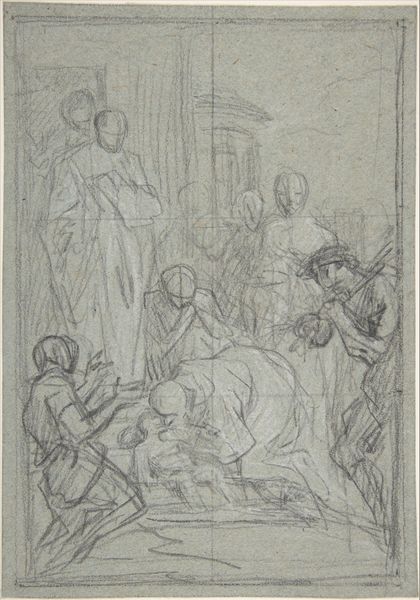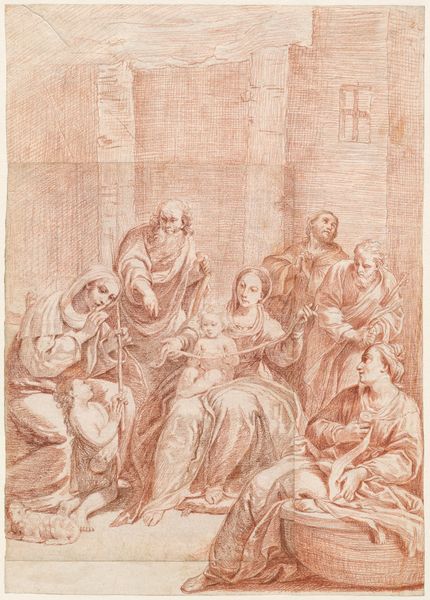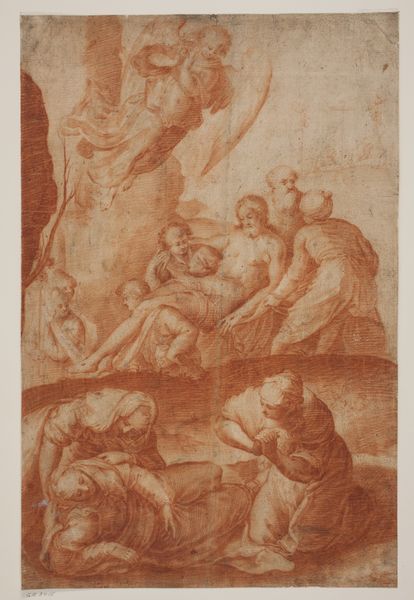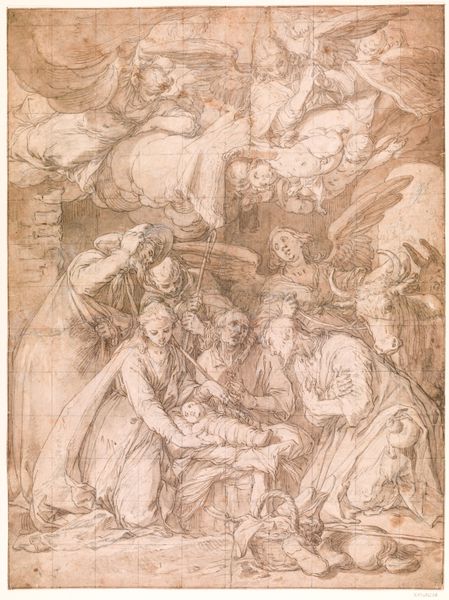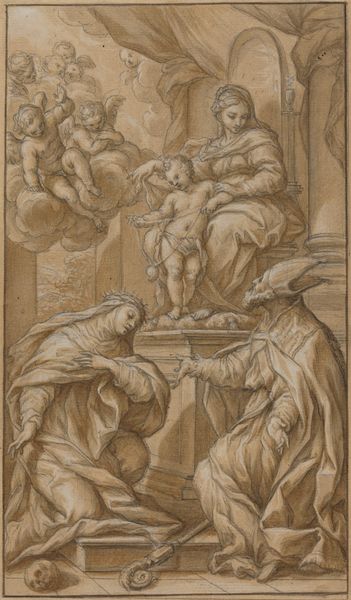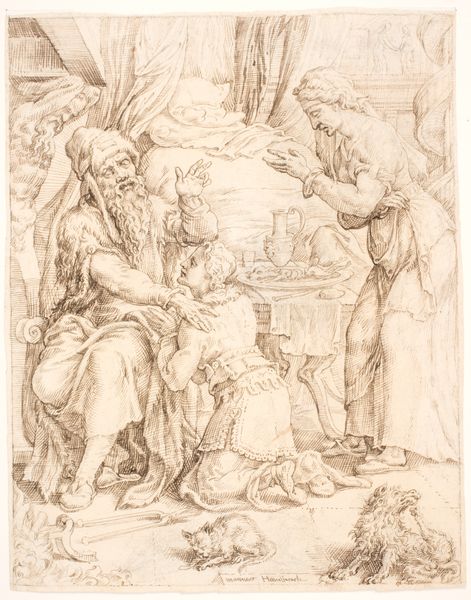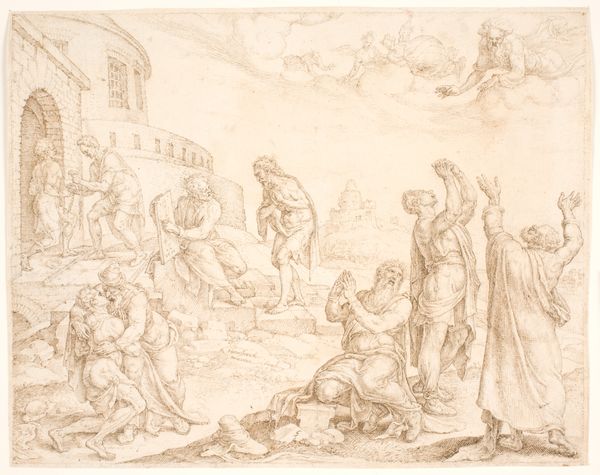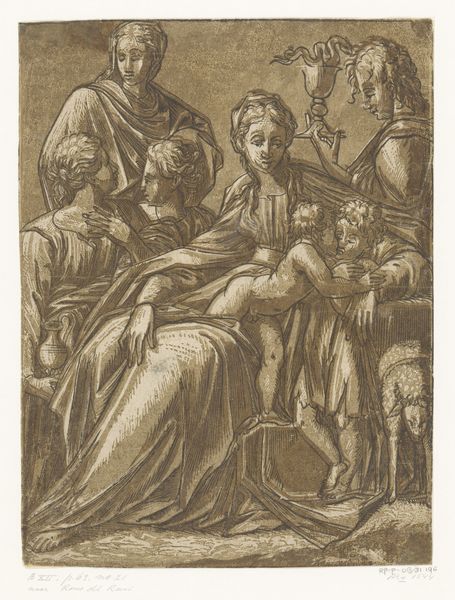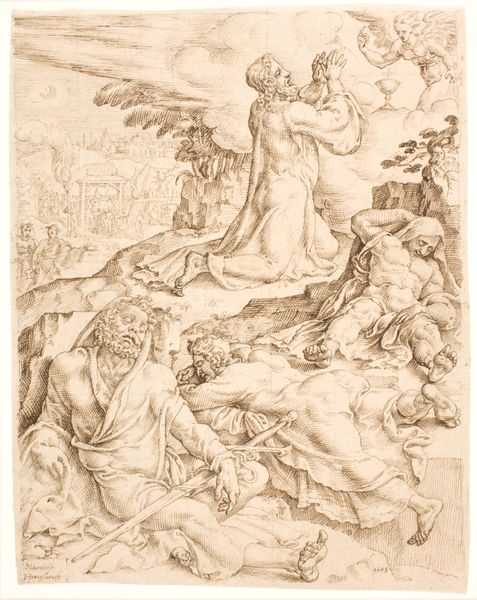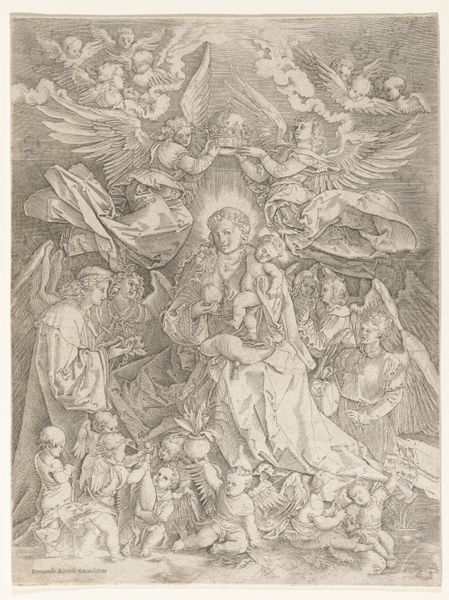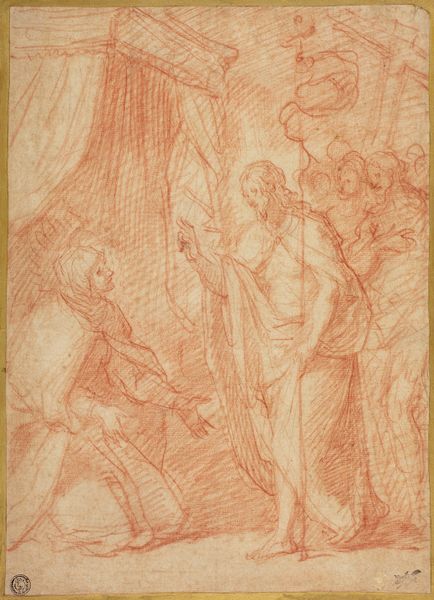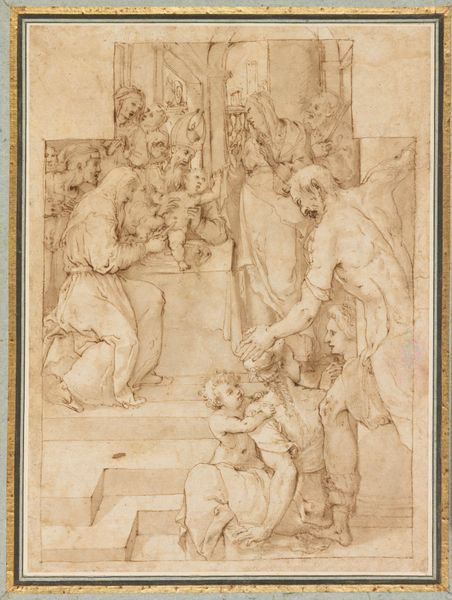
Assumption of the Virgin after Domenico Passignano (recto) c. 18th century
0:00
0:00
drawing, red-chalk, pencil
#
landscape illustration sketch
#
drawing
#
toned paper
#
light pencil work
#
red-chalk
#
pen sketch
#
pencil sketch
#
figuration
#
11_renaissance
#
personal sketchbook
#
ink drawing experimentation
#
pen-ink sketch
#
pencil
#
france
#
sketchbook drawing
#
history-painting
#
sketchbook art
Dimensions: 14 x 9 in. (35.56 x 22.86 cm) (sheet)16 7/16 x 11 1/2 in. (41.75 x 29.21 cm) (mount)
Copyright: Public Domain
Curator: This is a drawing entitled, "Assumption of the Virgin after Domenico Passignano," dating back to the 18th century, created with red chalk, pen, and pencil on toned paper. Editor: The dynamism is immediately striking. It's all sweeping lines and upward motion, giving the feeling of a chaotic ascension. The red chalk lends a certain warmth, despite the subject matter. Curator: Indeed, the choice of red chalk adds to the energy; it’s a sketch, so perhaps preliminary explorations for a larger history painting. Notice the compositional division— the Virgin Mary with angels above and the earthly scene of figures, presumably the Apostles, below. Editor: The earthly scene seems rooted in the theatrical gestures and expressions, not only highlighting religious sentiment, but revealing the way in which the performance of grief, and maybe hope, has changed since the Renaissance. This era grappled so intensely with what the faithful ‘should’ look like. Curator: Agreed. And look closely at how the artist uses the pen work to define form, juxtaposing it with softer lines achieved through pencil shading. It is in these variances that a certain drama begins to reveal itself in the composition. Editor: A crucial socio-political aspect of assumption imagery is that it bolstered Marian devotion and the Catholic Reformation response against Protestant iconoclasm. The very public role art played in visualizing faith wars seems a natural fit to your idea of drama. Curator: Absolutely. We can view its place through the lenses of various philosophical movements regarding the power of an image: if indeed a single sketch could shift devotional perception, for better or worse, across Europe. Editor: Considering its provenance, likely France, and the period it reflects, its existence reminds me of the deep entrenchment of the church even on personal, artistic terrains like sketchbooks, prompting us to recognize the power of societal conventions to seep into the supposedly isolated artist. Curator: Precisely, and engaging with works like these shows us the structural integrity beneath that seemingly individual vision, highlighting the artistic language and its nuances in depicting ascension and devotion. Editor: For me, thinking about the history behind it reveals the tension that art consistently tries to reconcile between free expression and cultural expectations.
Comments
minneapolisinstituteofart almost 2 years ago
⋮
We are grateful to the scholar Miles Chappell for identifying the Roman altarpiece Robert Ango copied in this study of the "Assumption of the Virgin." It is after Domenico Passignano's altarpiece (1604-16) in the Barberini Chapel in the church of Sant'Andrea della Valle, Rome.The French artist Robert Ango lived in Rome in the early 1760s and produced countless red chalk drawings copying Italian paintings from the preceding century.
Join the conversation
Join millions of artists and users on Artera today and experience the ultimate creative platform.
